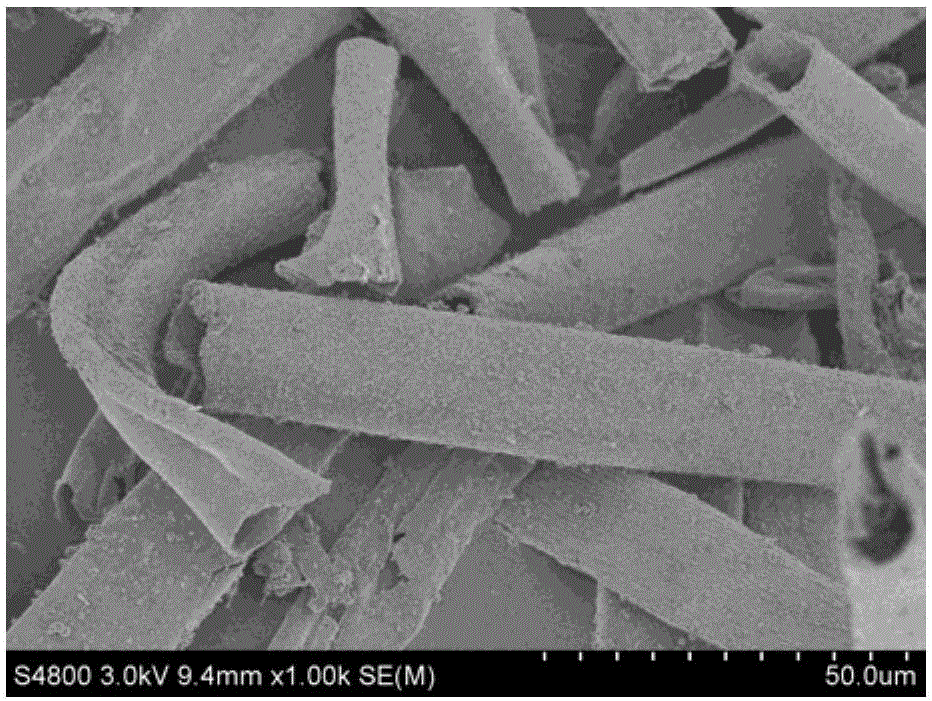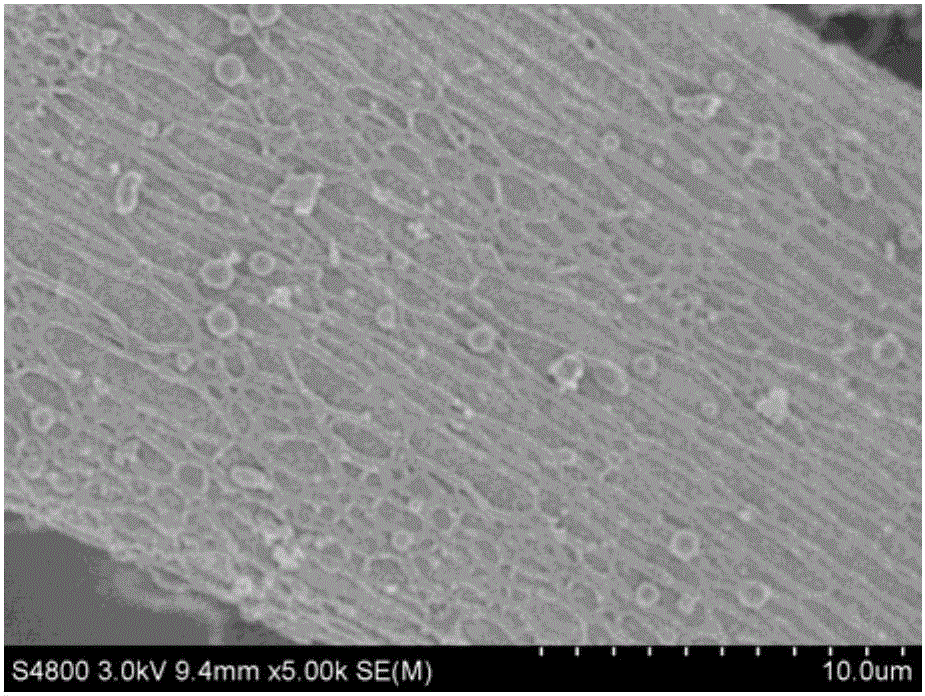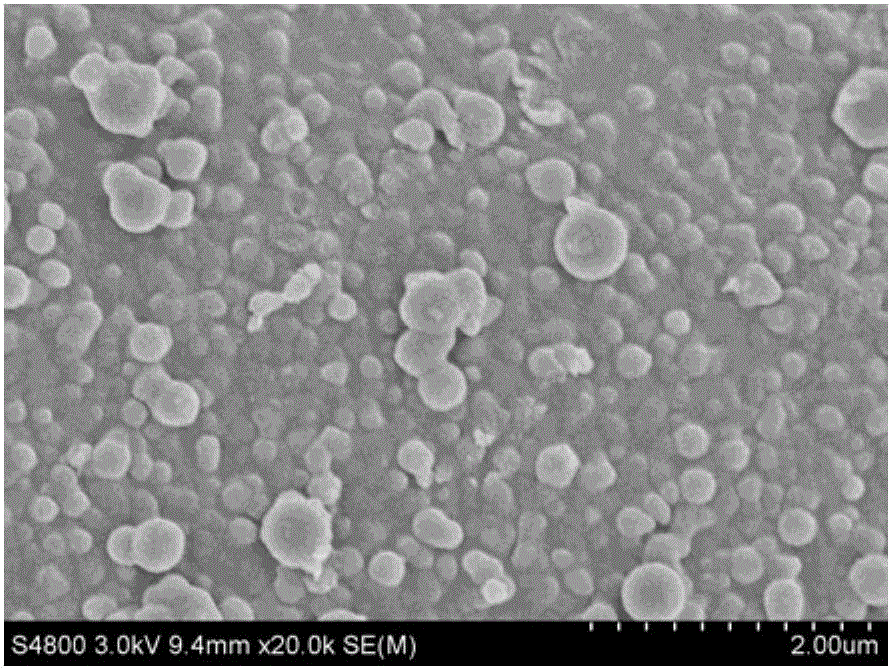Preparation method and application of hollow tubular biochar
A bio-carbon, tubular technology, used in the manufacture of hybrid/electrical double-layer capacitors, electrical components, battery electrodes, etc., to achieve excellent electrochemical performance, increase specific surface area, and reduce carbonization temperature.
- Summary
- Abstract
- Description
- Claims
- Application Information
AI Technical Summary
Problems solved by technology
Method used
Image
Examples
preparation example Construction
[0022] A method for preparing hollow tubular biochar, comprising the following steps:
[0023] Step 1: Soak the kapok fiber in ethanol for 6-12 hours, take it out and dry it, then soak it in water for 6-12 hours, take it out and dry it, so as to remove impurities in the kapok fiber raw material. Then, weigh 0.5-1.5g of kapok fiber and place it in the lining of a hydrothermal kettle, add 15-75mL of deionized water and stir for 30-60min, then add 5-15mL of concentrated sulfuric acid and continue stirring for 30-60min. The kapok fiber is one or more of Vietnamese kapok fiber, Indonesian kapok fiber and domestic Guangxi kapok fiber. The concentrated sulfuric acid can also be replaced by one or more of concentrated nitric acid, concentrated hydrochloric acid and phosphoric acid.
[0024] Step 2: Install the inner lining of the hydrothermal kettle equipped with the kapok fiber solution in the outer lining, fix it and place it in a homogeneous reactor, and control the filling ratio ...
Embodiment 1
[0031] Step 1: Soak the Vietnamese kapok fiber in ethanol for 6 hours, take it out and dry it, then soak it in water for 6 hours, take it out and dry it, so as to remove impurities in the raw material of the kapok fiber. Then, weigh 1 g of kapok fiber and place it in the lining of a hydrothermal kettle, add 50 mL of deionized water and stir for 30 min, then add 10 mL of concentrated sulfuric acid and continue stirring for 30 min.
[0032] Step 2: Install the inner lining of the hydrothermal kettle equipped with the kapok fiber solution in the outer lining, place it in the homogeneous reactor after fixing it, and control the filling ratio of the hydrothermal reaction to be 60%. The temperature was raised from room temperature to 180°C at a heating rate of 10°C / min, and the reaction was carried out for 24 hours.
[0033] Step 3: washing the kapok fiber after hydrothermal carbonization for 3 times with deionized water and absolute ethanol for 3 times, so as to remove impurities g...
Embodiment 2
[0038] Step 1: Soak the kapok fiber in ethanol for 8 hours, take it out and dry it, then soak it in water for 8 hours, take it out and dry it, so as to remove impurities in the kapok fiber raw material. Then, 0.5 g of kapok fiber was weighed and placed in the lining of a hydrothermal kettle, 75 mL of deionized water was added and stirred for 40 min, and then 5 mL of concentrated sulfuric acid was added to continue stirring for 40 min.
[0039] Step 2: Install the inner lining of the hydrothermal kettle equipped with the kapok fiber solution in the outer lining, place it in the homogeneous reactor after fixing it, and control the filling ratio of the hydrothermal reaction to be 80%. The temperature was raised from room temperature to 160°C at a heating rate of 5°C / min, and the reaction was carried out for 18 hours.
[0040] Step 3: washing the kapok fiber after hydrothermal carbonization twice with deionized water and with absolute ethanol twice, so as to remove impurities gene...
PUM
| Property | Measurement | Unit |
|---|---|---|
| diameter | aaaaa | aaaaa |
Abstract
Description
Claims
Application Information
 Login to View More
Login to View More - R&D
- Intellectual Property
- Life Sciences
- Materials
- Tech Scout
- Unparalleled Data Quality
- Higher Quality Content
- 60% Fewer Hallucinations
Browse by: Latest US Patents, China's latest patents, Technical Efficacy Thesaurus, Application Domain, Technology Topic, Popular Technical Reports.
© 2025 PatSnap. All rights reserved.Legal|Privacy policy|Modern Slavery Act Transparency Statement|Sitemap|About US| Contact US: help@patsnap.com



